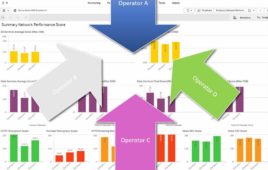Sprint, the Competitive Carriers Association (CCA) and the NetAmerica Alliance are teaming up to help smaller rural carriers accelerate their deployment of LTE and, in turn, provide nationwide LTE roaming agreements between those carriers and Sprint.
For its part, Sprint is offering up access to its network and some of its 800 MHz and 1900 MHz spectrum in certain markets. In addition, starting January 2015, Sprint will begin rolling out handsets that support Band 12 in the lower 700 MHz spectrum block in which many smaller carriers either hold licenses or currently deploy LTE. This will help open up an LTE device ecosystem for smaller carriers and give them more incentive to build LTE networks.
In return, CCA members and NetAmerica Alliance members allow Sprint LTE customers to roam their networks. This also means that any members of this small market alliance will be able to let their customers roam on Sprint’s LTE network.
“It will look like a ubiquitous network vision,” said Sprint CTO Stephen Bye.
NetAmerica CEO Roger Hutton said he has already met with 10 smaller carriers and they are all excited to be involved with the alliance and get access to more worthwhile LTE buildouts and devices that run on those networks.
“They’ve been locked out of the ecosystem the two largest carrier have,” Hutton said about smaller carriers.
On Thursday at CCA, Sprint Chairman Masayoshi Son plans to address this new initiative and the positive effects it can have on competition and boosting every other carriers’ ability to go head to head with AT&T and Verizon.
“The programs developed by Sprint, CCA and the NetAmerica Alliance are a strong first step to improving availability of LTE service and providing greater device choice for Americans in rural areas,” Son said in a statement. “They are also a clear demonstration of Sprint long-term commitment to bring real competition to the wireless industry.”
CCA CEO Steven Berry said this agreement has been a long time in the making and that AT&T’s pledge of interoperability in the lower 700 MHz has only helped the cause by putting LTE devices in the portfolios of smaller carriers.
Having an LTE roaming agreement with Sprint is an added asset to rural carriers that operate CDMA networks. Berry said that about 60 percent of CCA members operate CDMA networks and that means even further device interoperability in terms of legacy fallback.
Berry last week hinted at this plan when Wireless Week spoke with him. He said he didn’t know of any LTE roaming agreement through AT&T. Verizon has the LRA but Berry today explained the differences between what Sprint is doing and Verizon’s LTE roaming program.
Namely, Verizon’s LRA requires carrier partners to use Verizon spectrum, core and adhere to Verizon’s specifications. Sprint’s small market alliance allows for much more flexibility in all those areas.
And the benefits are obvious for Sprint. The carrier suffers a lot of grief over the holes in its national network and a roaming partner program like this can serve to fill in the weak spots, particularly in rural areas that put Sprint’s network footprint behind AT&T’s and Verizon’s.




